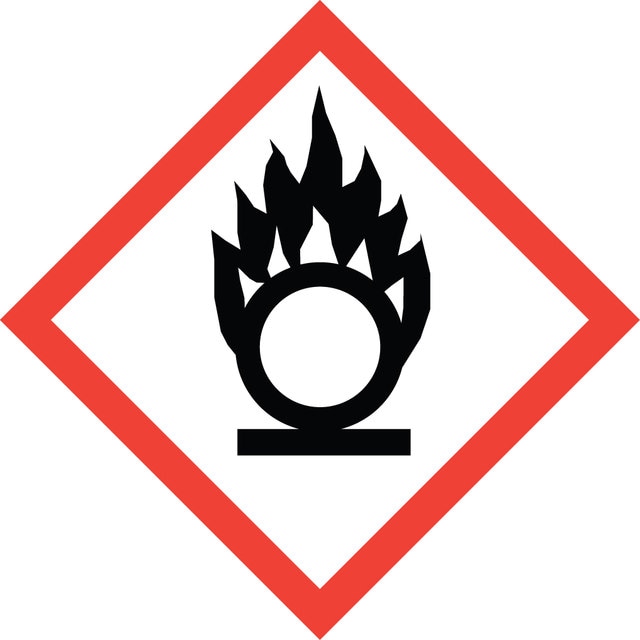Select a Size
About This Item
Product Name
Sodium perchlorate, ≥99.9% trace metals basis
SMILES string
[Na+].[Cl](=O)(=O)(=O)[O-]
InChI
1S/ClHO4.Na/c2-1(3,4)5;/h(H,2,3,4,5);/q;+1/p-1
InChI key
BAZAXWOYCMUHIX-UHFFFAOYSA-M
grade
anhydrous
assay
≥99.9% trace metals basis
form
powder
reaction suitability
core: sodium
impurities
≤1000 ppm (trace metals analysis)
pH
6.0-8.0 (25 °C, 5%, aq.sol.)
mp
482 °C
solubility
H2O: 209 g/dL at 15 °C
anion traces
chloride (Cl-): ≤30 ppm
sulfate (SO42-): ≤20 ppm
cation traces
Fe: ≤5 ppm
K: ≤500 ppm
Quality Level
Looking for similar products? Visit Product Comparison Guide
Related Categories
Application
General description
Packaging
25 g in glass bottle
signalword
Danger
hcodes
Hazard Classifications
Acute Tox. 4 Oral - Eye Irrit. 2 - Ox. Sol. 1 - STOT RE 2
target_organs
Thyroid
Storage Class
5.1A - Strongly oxidizing hazardous materials
wgk
WGK 1
Regulatory Information
Choose from one of the most recent versions:
Already Own This Product?
Find documentation for the products that you have recently purchased in the Document Library.
Articles
Discover the role of electrolytes in sodium-ion batteries, to enhance performance, safety, and sustainability in energy storage solutions.
Our team of scientists has experience in all areas of research including Life Science, Material Science, Chemical Synthesis, Chromatography, Analytical and many others.
Contact Technical Service

